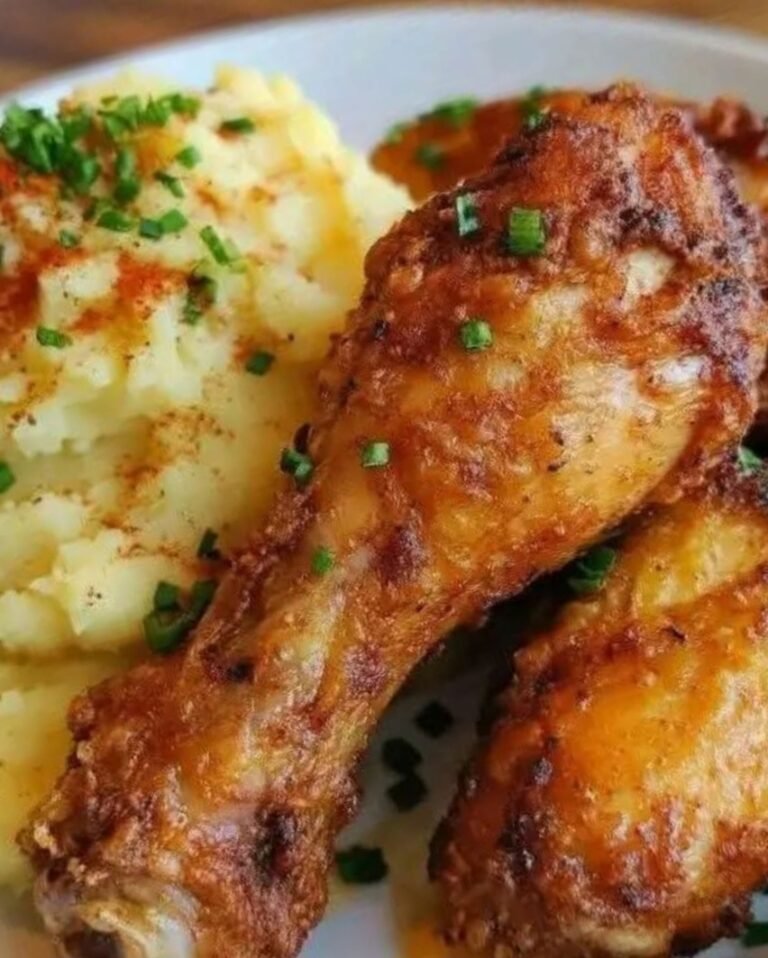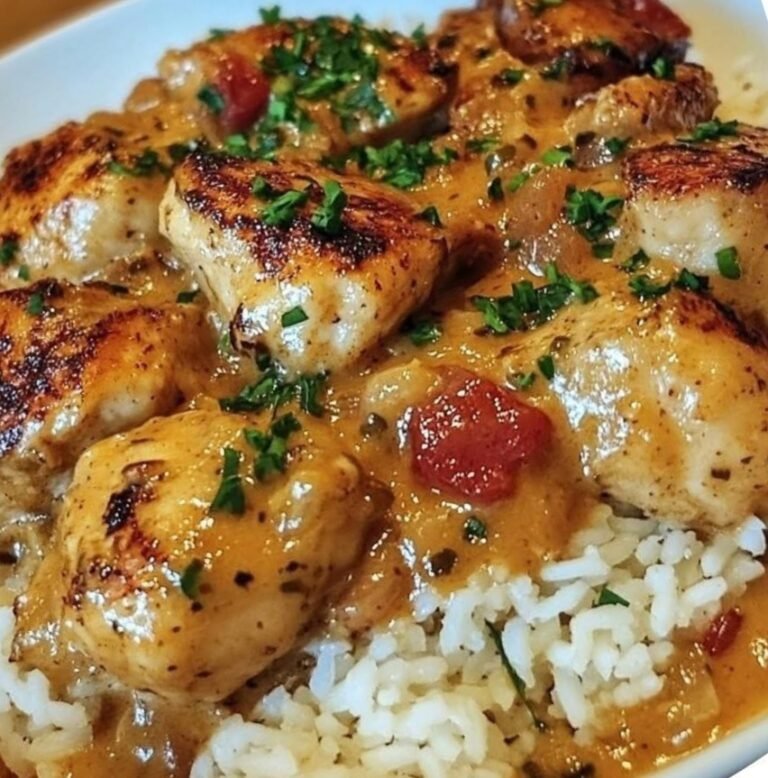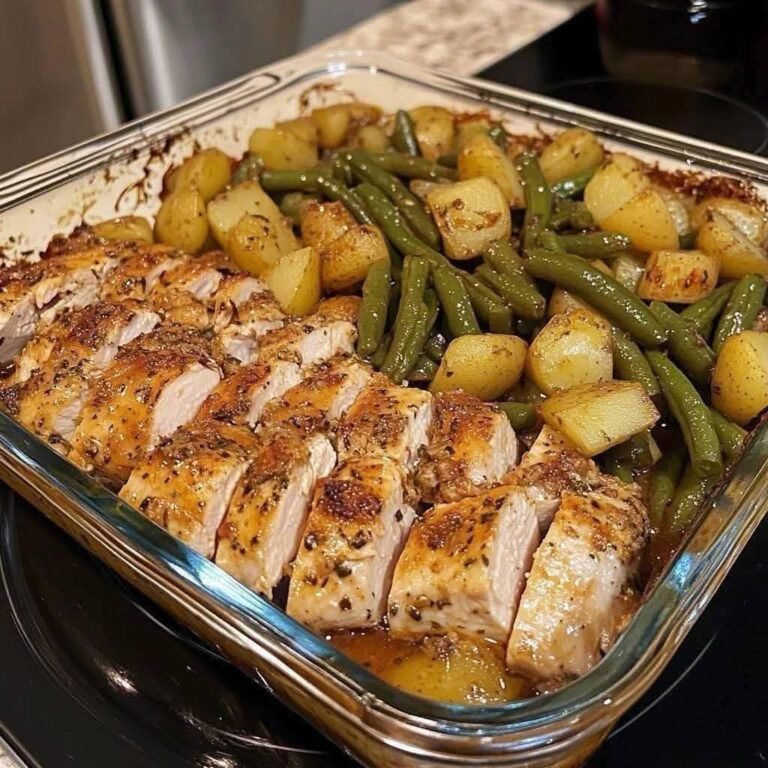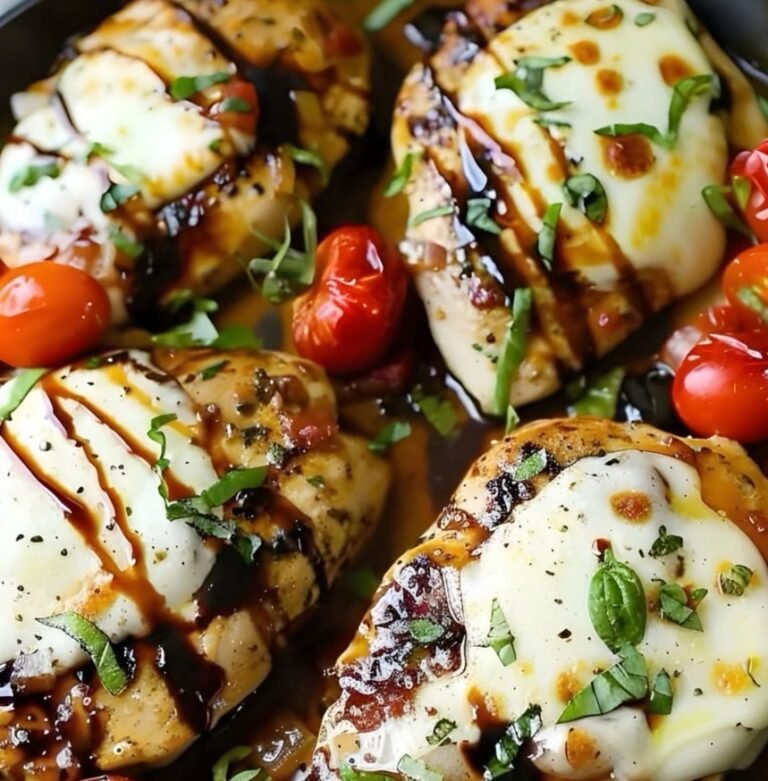Perfect Cast-Iron Seared Ribeye Steak: A Flavor-Packed Classic
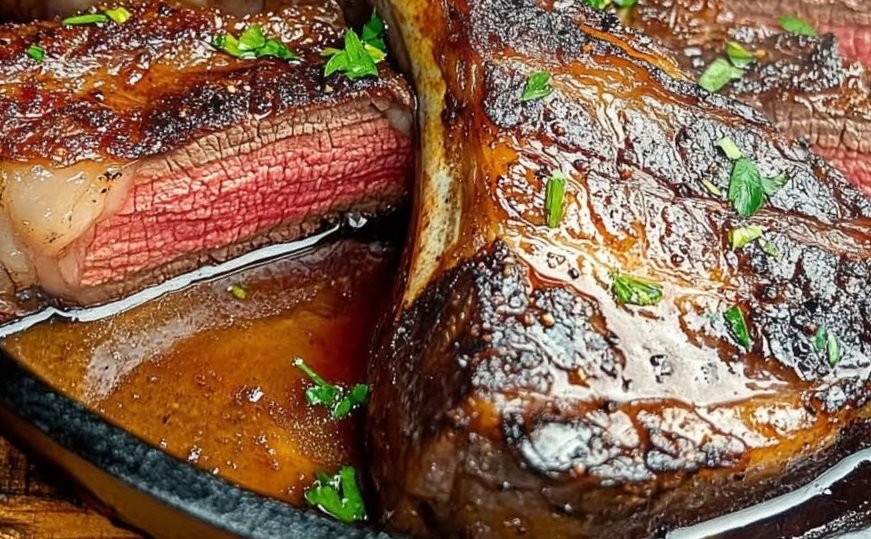
Nothing beats the satisfaction of a perfectly seared ribeye steak, with its golden-brown crust, juicy interior, and rich, beefy flavor. Cooking a ribeye in a cast-iron skillet is a time-honored method that delivers restaurant-quality results right in your home kitchen. The high heat of the skillet creates a mouthwatering crust, while a quick baste with butter, garlic, and fresh herbs infuses the steak with aromatic depth. Whether you’re preparing a special dinner or simply craving a hearty meal, this foolproof recipe will elevate your steak game. Pair it with classic sides like crispy skillet potatoes or velvety creamed spinach for a complete dining experience.
Prep Time: 5 minutes (plus 30 minutes for steak to come to room temperature)
Cook Time: 8–10 minutes
Total Time: About 45 minutes (including resting)
Servings: 1–2 (depending on steak size)
Difficulty: Medium
Ingredients
- 1 thick-cut ribeye steak (1.25–1.5 inches thick, about 12–16 oz), bone-in or boneless
- Kosher salt, to taste (about 1–2 tsp for generous seasoning)
- Freshly ground black pepper, to taste (about 1 tsp for robust flavor)
- 1–2 tbsp high smoke-point oil (such as avocado, canola, or grapeseed oil)
- 2 cloves garlic, lightly smashed to release flavor
- 2 sprigs fresh thyme or rosemary (or a combination for extra aroma)
- 2 tbsp unsalted butter, for basting and richness
Equipment Needed
- Cast-iron skillet (10–12 inches recommended)
- Tongs
- Meat thermometer (optional but highly recommended)
- Spoon for basting
- Cutting board
- Aluminum foil (for resting)
Instructions
- Prepare the Steak for Cooking
Remove the ribeye from the refrigerator 30–45 minutes before cooking to allow it to come to room temperature. This ensures even cooking and a tender texture. Pat the steak dry with paper towels to remove excess moisture, which is key to achieving a crisp, caramelized crust. Season both sides generously with kosher salt and freshly ground black pepper, pressing the seasonings gently into the meat for maximum flavor. - Preheat the Cast-Iron Skillet
Place a cast-iron skillet on the stove over high heat and let it preheat for 5–7 minutes until it’s screaming hot and just beginning to smoke. A properly heated skillet is critical for a deep, flavorful sear. Add 1–2 tablespoons of high smoke-point oil (avocado or canola works well) and swirl it to coat the bottom of the pan evenly. The oil should shimmer and lightly smoke, signaling it’s ready for the steak. - Sear the Steak
Carefully place the ribeye in the hot skillet, laying it away from you to avoid oil splatter. Press the steak gently with tongs to ensure full contact with the pan’s surface. Let it sear undisturbed for 2–3 minutes, or until a deep, golden-brown crust forms. Resist the urge to move it—this allows the Maillard reaction to work its magic, creating complex flavors. Flip the steak and sear the other side for another 2–3 minutes for a medium-rare finish (adjust time for your preferred doneness). - Baste with Butter and Aromatics
Reduce the heat slightly to medium-high and add the unsalted butter, smashed garlic cloves, and fresh thyme or rosemary sprigs to the skillet. As the butter melts and foams, tilt the pan slightly and use a spoon to scoop up the melted butter and aromatics, drizzling them over the steak repeatedly for 1–2 minutes. This basting process infuses the meat with rich, nutty, and herbaceous flavors. For medium-rare, aim for an internal temperature of 130–135°F (54–57°C), checked with a meat thermometer. (See doneness guide below.) - Rest the Steak
Transfer the ribeye to a cutting board and loosely tent it with aluminum foil. Let it rest for 5–10 minutes to allow the juices to redistribute, ensuring a tender and juicy bite. While resting, reserve the pan juices (butter, garlic, and herbs) for serving. - Slice and Serve
Slice the steak against the grain for maximum tenderness, if desired, or serve it whole for a dramatic presentation. Spoon the reserved pan juices over the top for an extra burst of flavor. Garnish with a sprinkle of flaky sea salt for a gourmet touch, if you like.
Steak Doneness Guide (Internal Temperatures)
- Rare: 120–125°F (49–52°C)
- Medium-Rare: 130–135°F (54–57°C)
- Medium: 140–145°F (60–63°C)
- Medium-Well: 150–155°F (66–68°C)
- Well-Done: 160°F (71°C) and above
Note: Remove the steak from the heat 5°F below your target temperature, as it will continue to cook while resting.
Side Dish Pairings
Elevate your steak dinner with these classic, complementary sides:
- Crispy Skillet Potatoes
- Ingredients: 1 lb baby potatoes, 2 tbsp olive oil, 1 tsp smoked paprika, 1 tsp garlic powder, salt, pepper, fresh parsley.
- Instructions: Boil potatoes until fork-tender (10–12 minutes), then drain and halve. Heat olive oil in the same cast-iron skillet over medium heat. Add potatoes, cut-side down, and season with paprika, garlic powder, salt, and pepper. Cook until golden and crispy, about 5–7 minutes. Garnish with chopped parsley.
- Why it Works: The crispy texture and smoky spices contrast beautifully with the steak’s richness.
- Velvety Creamed Spinach
- Ingredients: 1 lb fresh spinach (or 10 oz frozen), 1/2 cup heavy cream, 1/4 cup grated Parmesan, 1 clove garlic (minced), 1 tbsp butter, pinch of nutmeg, salt, pepper.
- Instructions: Blanch fresh spinach in boiling water for 30 seconds, then plunge into ice water and drain. (If using frozen, thaw and drain well.) In a skillet, melt butter over medium heat, sauté garlic until fragrant, then add spinach. Stir in cream, Parmesan, nutmeg, salt, and pepper. Simmer until thickened, about 3–5 minutes.
- Why it Works: The creamy, slightly nutty spinach complements the steak’s bold flavors and adds a vibrant green element to the plate.
- Other Great Options:
- Garlic Butter Mushrooms: Sauté mixed mushrooms in butter with garlic and thyme for an earthy side.
- Grilled Asparagus: Toss asparagus spears in olive oil, salt, and pepper, then grill or sear until tender-crisp.
- Caesar Salad: A crisp, tangy salad with homemade dressing for a refreshing contrast.
Tips for Success
- Choosing the Right Steak: Opt for a well-marbled ribeye, as the fat content enhances flavor and juiciness. A thickness of 1.25–1.5 inches ensures a good crust without overcooking the interior.
- Cast-Iron Care: Preheat the skillet gradually to avoid warping, and ensure it’s well-seasoned for a non-stick surface. Clean with hot water and a brush, then dry and lightly oil to maintain it.
- Ventilation: Searing creates smoke, so turn on your kitchen fan or open a window to keep the air clear.
- Storing Leftovers: Wrap leftover steak tightly in plastic wrap or store in an airtight container in the refrigerator for up to 3 days. Reheat gently in a low oven (250°F) to avoid drying it out.
- Alternative Cooking Methods: If you don’t have a cast-iron skillet, a heavy-bottomed stainless steel pan can work, though cast-iron retains heat best for searing.
Why You’ll Love This Recipe
This cast-iron seared ribeye steak recipe is all about simplicity and bold flavors. The cast-iron skillet’s ability to hold high heat ensures a perfect crust, while the butter-basting technique adds a luxurious finish. It’s quick enough for a weeknight dinner yet impressive enough for a date night or special occasion. Plus, the versatility of pairing it with your favorite sides makes it a go-to recipe for any steak lover.
A Nod to Tradition
The cast-iron skillet has been a kitchen staple for generations, prized for its durability and heat retention. Searing a ribeye in cast-iron is a nod to classic American steakhouse techniques, where quality ingredients and precise cooking elevate a simple cut of beef into something extraordinary. With this recipe, you’ll bring that steakhouse experience home, no reservation required.
